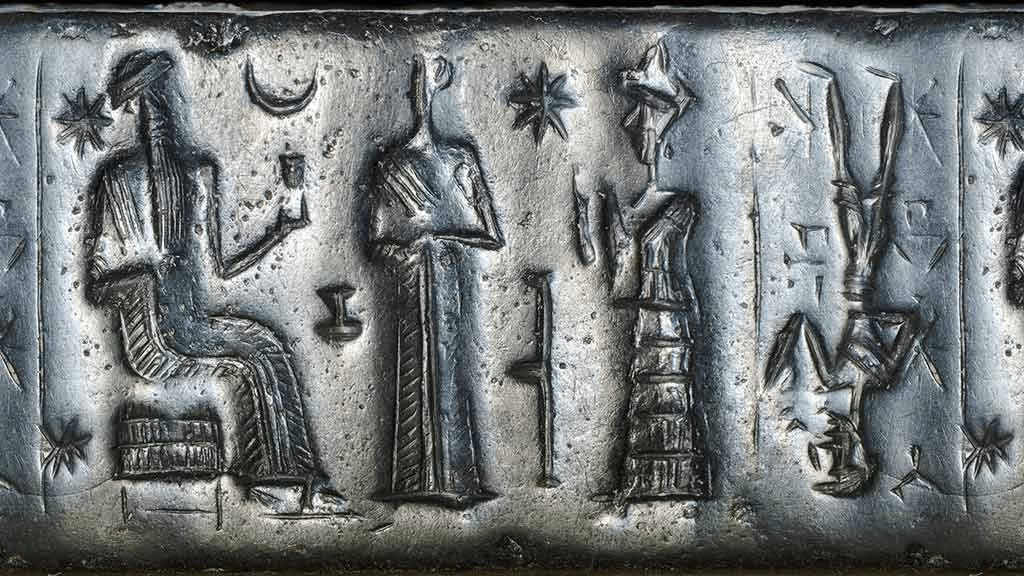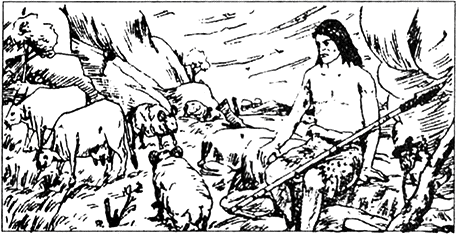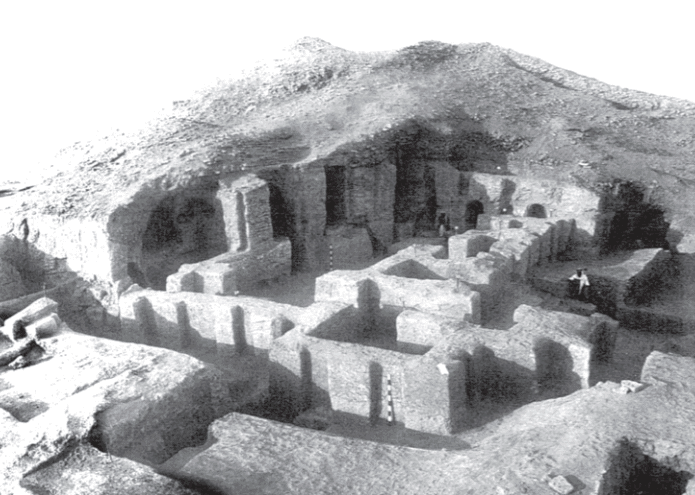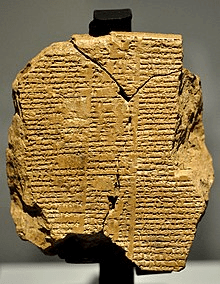Answer in Brief
Q1: Why do we say that it was not natural fertility and high levels of food production that were the causes of early urbanisation?
Ans: The development of Mesopotamia from a prosperous village to a city proves that natural fertility and high levels of food production were not the only factors responsible for urbanisation. There were other factors as well that caused urbanisation, two of which have been explained below:
- Growing demands: Besides food, a growing population needs several other goods and commodities (such as weapons, agricultural tools, and potteries) to fulfil their needs. For this, an agrarian village had to either produce these goods on its own or rely on other villages for these needs via trade. This called for the development of manufacturing facilities within the village along with a well-developed trade network and transportation. Thus, it can be said that the fulfilment of growing demands facilitated urbanisation in Mesopotamia.
- Division of labour: Over time, production expanded in order to meet growing demands; this resulted in different people specialising in specific tasks. This, in turn, helped them to tap and fulfil the growing demands efficiently. However, to sustain this division of labour, a proper organisational framework was essential. This framework included a class of men who could supervise the work of others. Thus, this organisation created a class of administrators and supervisors along with the already existing class of labourers.
Q2: Which of the following were necessary conditions and which were the causes of early urbanisation, and which would you say were the outcome of the growth of cities:
(a) highly productive agriculture, (b) water transport, (c) the lack of metal and stone, (d) the division of labour, (e) the use of seals, (f) the military power of kings that made labour compulsory?
Ans:
Following were the necessary conditions for early urbanisation:
- Highly productive agriculture: It was a necessary condition for early urbanisation. It helped in attaining self-sufficiency. Once the agricultural output was secured, people could concentrate on more productive activities, thereby fostering urbanisation.
The causes of early urbanisation were:
- Water transport: Transportation helped in the movement of goods from one place to another. It was done by means of road transport and water transport. Water transport was the cheapest mode, as heavy goods could be transported with less effort and in less time, as the current of water propelled the boat. Thus, it saved time and money. Water transport helped to connect different towns and villages, thereby establishing trading networks.
- Lack of metal and stone: Let’s take the example of Mesopotamia. Mesopotamia was rich in food resources; however, it lacked metal and stone resources. This facilitated the trade of goods between Mesopotamia and other countries like Turkey and Iran. These Gulf countries were rich in mineral resources, so they traded mineral goods for agricultural products.
The outcomes of the growth of cities were:
- Use of seals: Seals were used to regulate and safeguard trade against malpractices like black-marketing, hoarding, and adulteration.
 Mesopotamia Seals
Mesopotamia Seals
- Division of labour: When work other than agriculture started to be conducted in the thriving towns, people selected jobs according to their skills. To supervise the work of those people, another group of men was needed. Thus, the division of labour evolved to achieve better efficiency.
- Military power of kings that made labour compulsory: To sustain the trade of goods and services, the kings made labour compulsory. This was done to maintain sufficient resources of labour for the movement of goods from one place to another.
Q3: Why were mobile animal herders not necessarily a threat to town life?
Ans: The reasons why mobile animal herders were not necessarily a threat to town life include:
- Agriculture and animal rearing often occurred close together. In the kingdom of Mari, many communities had both farmers and pastoralists, with most land used for grazing sheep and goats.
- Herders needed to trade young animals, cheese, leather, and meat for grain, metal tools, and other goods. The manure from penned flocks was also beneficial to farmers.
- Conflicts could arise, such as when a shepherd took his flock to water across a sown field, damaging crops. Mobile herdsmen could also raid agricultural villages for stored goods.
 The man tending a herd of animals.
The man tending a herd of animals.
- Settled groups might restrict pastoralists' access to water from rivers and canals, leading to tensions.
Q4: Why would the early temple have been much like a house?
Ans. The early temples in Mesopotamia resembled houses for several reasons:
- The people viewed their gods as the owners and protectors of their cities, lands, and resources.
- These beliefs fostered a sense of respect and fear, prompting people to keep their gods satisfied.
- Temples often had multiple rooms and open courtyards, similar to ordinary homes.
- They served as centres for community activities, including the processing of agricultural produce.
Overall, the design of temples reflected the importance of the gods in daily life and the desire to honour them.
Answer in Short Essay
Q5: Of the new institutions that came into being once city life had begun, which would have depended on the initiative of the king?
Ans. With the growth of city life, several important institutions developed under the leadership of the king. Economically, the king played a central role in building infrastructure, managing trade routes, and collecting taxes to sustain the urban economy. Culturally, temples became significant centres of religious and social life, often receiving royal patronage for their construction and decoration, which also helped reinforce the king's authority. Politically, the king ensured effective city administration, maintained law and order through a standing army, and developed communication networks to govern more efficiently. These institutions together reflected the king’s vital role in shaping and sustaining city life.
 A temple of a later period, c.3000 BCE, with an open courtyard and in-and-out façade (as excavated).
A temple of a later period, c.3000 BCE, with an open courtyard and in-and-out façade (as excavated).
Q6: What do ancient stories tell us about the civilisation of Mesopotamia?
Ans: Ancient stories give us important information about the civilisation of Mesopotamia, helping us understand their culture, beliefs, and daily life. Two major literary sources that reveal these details are the Bible and the Epic of Gilgamesh.
The Bible describes Mesopotamia as the land between the rivers Euphrates and Tigris. In the Old Testament it mentions a city called Shinar, which historians believe refers to Sumer. The Bible also gives information about the people living in the region, such as the ancestors of the Hebrews who stayed in the northern part of Aram or Syria.
The Epic of Gilgamesh gives a detailed view of Mesopotamian religious beliefs. It shows that the people were deeply spiritual and believed that all parts of life, including love and death, were linked to different gods and goddesses. Important figures in the epic include Aruru, the goddess of creation, and Anu, the god of heaven. The epic also talks about their ideas of the afterlife, where souls could either go to heaven, a place of happiness, or to hell, a dark and unpleasant place.
These stories help us understand the values, beliefs, and lasting influence of Mesopotamian society.
 Epic of Gilgamesh
Epic of Gilgamesh






















